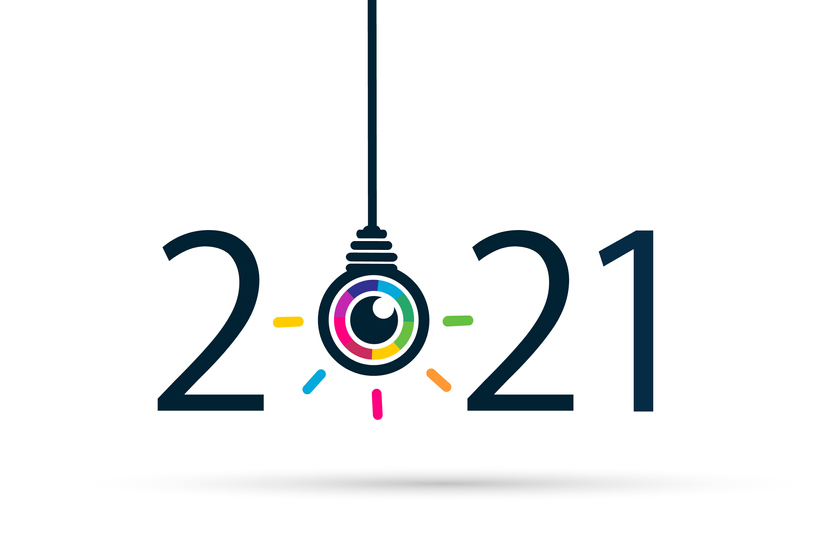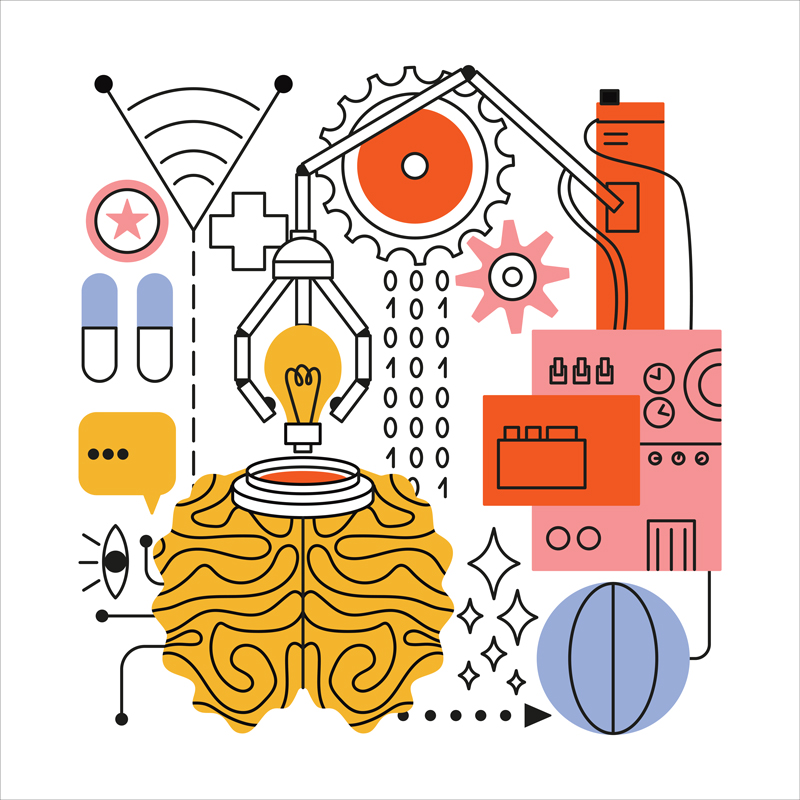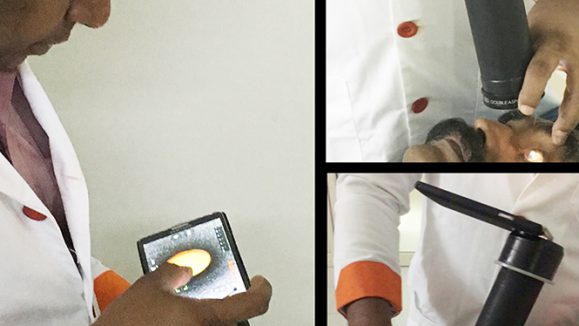Below, we look into what key players and investors have been up to this year, as well as their outlook for 2021.
This year has been the most challenging for many, on both the personal and clinical level. However, investments have been going well. This sentiment, expressed by Dr. Robert Rothman, partner at OCLI/Glaucoma Consultants of Long Island, summed up the ophthalmic industry’s scenario succinctly. He was the moderator of the OIS Year in Review program and also spoke as the founding partner of InFocus Capital Partners, which invests in early-stage ophthalmic companies.
The session focused on ophthalmic industry perspectives, with panelists gathered from both the clinical and investor sides. Panelists included Laurent Attias, senior vice president, corporate development strategy, business development and licensing, and mergers and acquisitions at Alcon; Andrew Chang, head of global sales, ophthalmic devices and president at Carl Zeiss Meditec; Mark Hagler, senior vice president, head of ophthalmics, oncology and LTC (long-term care) at Sun Pharma; Dr. Robert Kissling, vice president, medical affairs at Bausch + Lomb; and Nikki Sidi, vice president, global strategic marketing at Johnson & Johnson Vision (J&J).
Focus on Priorities Amidst Challenges

Attias said that the year took them by surprise; they have had to evaluate if changes made in 2020 were for the current period, or for the long-term. “The good news is that it did not change our level of activity. We were able to continue to look at some key strategic areas and unmet needs in ophthalmology. But I would say because of COVID-19 and what it introduced in social distancing, it did put an extra emphasis or acceleration on things related with telemedicine or digital health.”
Hagler said enrollment slowed in some of their trials earlier on, but have now gotten back on track. “But from a BD (business development) perspective, things didn’t really change,” he said. To some degree they widened their scope a little more. “Operationally, there were a lot of changes. I think we did a decent job of outreach to our customers to identify their needs in this environment and how they wanted us to interact with them. And we adapted our processes to meet their needs,” he added. Developmentally, he said they couldn’t really pull patients to trials, for instance.
Having said that, in relation to the changes and how they interacted with providers, he thinks the pendulum is going to swing back. “But I don’t think it’ll go back to where it was pre-COVID. [The pandemic] has allowed us to explore these new technologies versus the traditional means of interacting. So, I think we’re more customer-centric, but it depends on what method of interaction the customer prefers. We are evaluating a hybrid model moving forward,” he said.
At Bausch + Lomb (BNL), Dr. Kissling said it was quite similar in that it was an operationally challenging year. “But as Mark pointed out, there are certain opportunities which allowed us to discern what things were important and some things that seemed important, but weren’t. Some of the disruptions accelerated other areas where there was an increased focus. BNL was able to assemble a pretty robust pipeline, particularly in the pharma space (adding to an already significant surgical one), most of which occurred during the COVID period,” he said.
From J&J’s perspective, Sidi shared that this year has reaffirmed the importance of focusing on the things that matter the most, including our most precious sense, which is sight. “It’s an area we feel even more strongly about the patients’ needs and we saw the refractive business doing incredibly well. It’s a time when people finally said, ‘I am going to invest in what matters most — in my health, and my vision is on top of that list’.”
“We feel very optimistic about our strategies. If anything, it’s caused us to double down on some of the strategic areas we are focusing on. Some areas, as Rob mentioned, were accelerated. So for us, it was about how we accelerate the need to simplify surgeons’ lives, or simplify staff’s lives to serve patients. So whether it’s digital data, patient engagement, all of those adjunct, and better innovation beyond just a product, became really important for us.”
At this point of the discussion, it’s clear that healthcare is enjoying a mostly positive prospect in the long-term due to the basic construct that good healthcare is always necessary, no matter what. “Nimble businesses that are able to understand these changes and adapt to them quickly are going to be the ones that succeed,” Dr. Rothman said.
Chang said that at Zeiss, they looked at customer outreach first. “We’ve deployed a fast start strategy and are getting a fast turn on all our developments and how that aligns with immediate customers’ needs.” He shared how their organization used digitalization workflow strategies to help speed up workflow, realigned immediate needs, and accelerated projects relevant in the future. “Like everybody else, enrollment was a challenge during this time, but we have a global business where not everybody is under the same constraints at the same time. So that also helped balance throughout the ebbs and flows of the globe.”
Big Spin-offs’ Impact on Investments
The year saw Alcon’s departing from Novartis, while Bausch + Lomb Eyecare will spin off from Bausch Health. What’s the investor value and what does it mean for the industry as a whole?
“The two spin offs — while they look similar — unlocking the value is highly specific to the individual circumstances of your business,” Dr. Kissling said. “We believe in Bausch + Lomb as a spin-off business, a standalone eyecare player that will unlock value for shareholders.”
Attias said that value is one thing, but he thinks the element of a strategic fit in managing a business comes into play. He recounted his time at Alcon when it was under Nestle’s ownership (from 1972 to 2002); it then went to the public market for around six years before being acquired by Novartis. “Novartis has been a great partner. They’ve enabled a lot for the BD side for us, but ultimately, a big pharma company mixed with a more device-oriented type of company, which Alcon was, was a challenge in terms of strategic directions.” Nestle’s core business was also different from that of Alcon’s, so they managed Alcon at “a very arm’s length way,” so in reality, they were “independent.”
Dr. Rothman added in his perspective as an ophthalmologist, and also an investor having to deal with consolidations like these. He observed a “death pool” of companies in this way (being bought up) and mused how long it would be before AbbVie realizes that Allergan needs to be its own company again.
“These consolidations do provide a little bit of a disruption with regard to how physicians interact with those companies,” he added.
What’s Bright Ahead
“We’re optimistic about the industry, the recovery and what 2021 will bring. Specifically at Johnson & Johnson Surgical Vision, it’s all going to be about innovation for us for next year. We’ve had a lot of success for some recent launches like Tecnis Synergy and Tecnis Eyhance, all in markets outside the U.S. We’re excited to make [these products] globally available, with a strong portfolio to meet surgeons’ and many patients’ needs,” said Sidi.
“We’re excited to bring that to all our markets globally, and we’re excited about the many new launches that are going to be happening in the U.S. to fuel growth in recovery and serve many patients, whom we know will be looking for care next year.
“On top of all the innovations, we’re looking to bring more digitally driven initiatives and tools to help our surgeons really engage those patients,” Sidi shared. They’re also looking forward to more innovation under the Tecnis brand.
At Sun Pharma, Hagler said they’re still in launch mode with their dry eye product and BAK-free glaucoma drop, both of which will be a big focus in 2021. He is excited about the vaccine as well. “I’m looking forward to more personal interaction, hopefully in the late summer or fall, and we’re going to continue to utilize the increased flexibility we now have to interact with each other, as that’s not going away. That will allow us to tailor our interactions specifically to the desires of our customers.
“We want to continue to stay close to our customers as that’s really served us well this year — and so we can meet their needs in a compliant manner,” Hagler added.
Besides planning to expand their U.S. market significantly and going into new markets, Chang said Zeiss has just announced the Microsoft-Zeiss partnership for all their different segments. “Not just medical, but all of the things we do collaborations with, from research to microscopy, to semiconductors to consumer goods, to cloud based services.
“I think we all understand the need to make things more efficient, especially with the data we get on a daily basis within our specialty. In eyecare and in patients — and I believe surgeons and doctors now — are more receptive to the digitalization in care, where as a patient myself, I would probably not have wanted to do everything virtually. But it’s okay with me now if I can take care of all our needs as much as we can, without waiting in waiting rooms as before.
“So, there’s a lot of stuff coming for us and for your audience … and we’re continuing to work on a business development side to continue discussions as we see fit.”
For Dr. Kissling, 2021 is a “big year” for BNL with the impending spin-off. He acknowledged that there might be “turbulence,” but he thinks there’s also personal and corporate opportunity in that turbulence, as well. “I think in terms of finding synergies and economies in that new structure, that’s very exciting,” he said.
“But the most exciting thing in the long-run is the pipeline. As head of medical, I’ve had to make sure we carry those things forward because that’s the promise of the company in the future. We’ve put some investments ranging from solid to game-changing into the portfolio. These include dry eye, myopia control, dry AMD, for instance.”
For Alcon, Attias said the future of cataract surgery is always going to be about delivering the best outcomes for patients. “Therefore, the seamless exchange of data is really critical to the future of cataract surgery, whether it’s in the equipment that is connected in a smart way, or in applications that allow doctors to have a simpler approach in surgical planning and execution, or all of the diagnostics allow for decision-making. These are great things happening with the help of AI,” Attias said.
Another area Attias said Alcon is looking forward to is in myopia. “It’s a big golden egg opportunity,” he said.
Ophthalmology’s Biggest Unmet Needs
In this final segment of the final segment of the OIS Year in Review, Dr. Rothman asked for the corporate perspective regarding ophthalmology’s greatest unmet need.
Sida said: “The greatest unmet need in ophthalmology is access. We know that 80% of visual impairment can actually be prevented if discovered early. But really, only 10% of people get the treatment. I think all our efforts should be focused on access. I think that’s where technology and innovation plays a key role.
“How do you get comprehensive preventative therapy? How do you get earlier intervention strategies and certainly the investments in data analytics and AI to make sure that the outcomes you’re getting are the ones that are going to be the best tailored to that patient?”
She also revealed that their subsidiary Jannsen Pharmaceuticals is going to double down on the retinal area as a stronghold. They’re acquiring a small company and will be doing gene therapy.
Hagler said that Sun is more focused on drug delivery. “There are a lot of great molecules already on the market. Unfortunately, they may not be optimally delivered, so new vehicle technology is one way to get these good molecules right where they need to be. The other aspect of vehicle technology is to eliminate the need for some excipients that could be harmful to the ocular surface. So that’s another way to harness the value of a drug delivery to maximize the value of the compounds.”
Continuing the thread on unmet needs, Dr. Kissling said the bar would be to think about the combination of all the things mentioned above, which would help a clinician to do something he or she currently can’t. “I completely agree with Nikki that access is big. And those two things (having a bar and access) actually go together. And it sets a new bar, when you develop products.
“The focus really needs to be on things that enable a clinician to do something different, whether it’s things like delivery [or something else]. But if you can fundamentally change outcomes, I think you get that paid for. So, it’s really finding the sweet spot of all of those things together,” continued Dr. Kissling.
For example, he said if there was a treatment for dry AMD patients that not only preserved, but restored vision, that would get funding. “It will probably combine all of those things (mentioned above) and novel compound AI technology and eventually delivery,” he said.
Chang thinks it’s about finding the balance between having all these technologies and tools available and making things efficient when treating patients. “I can paint that picture of what technology may look like five years down the line, which is very exciting, but I think a lot of the conditions will ask us ‘how can you help us today?’” he said.
Attias has a different outlook. “We feel there’s too much burden today on therapies … including multi-therapies in many areas, glaucoma being one of them. So, we’re trying to circumvent that issue with compliance because as Mark said, there are a lot of molecules that are great out there, but they’re just not delivered in a way that is patient-friendly.
“There’s the right balance of managing a disease in a simpler, more compliant, efficacious way for the patient. But at the same time, also making sure that the interaction with the eyecare provider is the right one with the right frequency. So, I think those are exciting areas to try to find new technologies and define new paradigms.
“I think a lot is to be said on the combination of drug delivery to be implemented in the OR and monitoring it through diagnostics for making better decisions. Those are the things I’m excited about and that there are still unmet needs that we’re trying to tackle,” shared Attias.
In closing, Dr. Rothman said, “I will summarize everything all of you just said by narrowing it down to whoever can make it possible for me to treat my patients efficaciously, while playing golf at the same time — that will be my favorite.”
Editor’s Note: OIS Year in Review, presented by Ophthalmology Innovation Summit (OIS), was held on 9 December 2020. Reporting for this story took place during the event.





